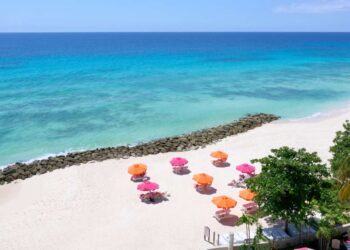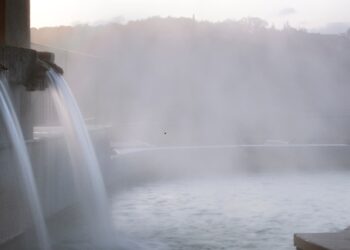Just off the mountain in St. Moritz — my skis put aside to fend for themselves on wooden racks, my ski boots unbuckled and frosted with snow — I hobble into Chesa Veglia, snuggle into a fur blanket by the window, and order the restaurant’s world-famous truffle pizza. It arrives at my table accompanied by a heady perfume, an intoxicating fragrance that brings to mind something novelist William Makepeace Thackery wrote 200 years ago. “Presently, we were aware of an odour gradually coming towards us, something musky, fiery, savoury, mysterious — a hot drowsy smell that lulls the senses, and yet enflames them—the truffles were coming.”
Sprinkled over pizza, truffles make for a sensory symphony of hedonism. Biting into the first piece with gusto, I feel intense gratitude to the person who took their dog through the woods to find this delectable treat — a fungi buried 6 to 8 inches below the earth. I appreciate their efforts. I’ve hunted truffles and sought out mushrooms in the wild, after all. I’ve done it in Austria, Argentina, Croatia, Italy, Wales — even the United States. But the best time was in the garrigue-pocked Languedoc where I watched a dog dig furiously to uncover a truffle as big as a man’s fist. His handler traded him a treat for it, then hoisted the truffle (which looked like a dirt clod) into the air with the pride of an Olympian brandishing a gold medal. Then, without preamble, my truffle guide pulled a huge knife from his pocket and began to slice the prized fungi into pieces, his massive palm serving as cutting board. Slicing the fungi into thin slivers, he handed me a perfect splinter to savor. It was a gastronomic moment to be treasured forever.
More About Truffle Hunting and Fungi Foraging

While truffles and mushrooms aren’t the same species, we gourmet-leaning humans often put them into the same category. Still, both are members of the fungi kingdom. Generally truffles are tubers that grow below the ground while mushrooms grow above. Pigs once were used to unearth truffles, but the greedy creatures would simply gobble up their finds. Today dogs dominate as truffle-hunting helpmates. More practical, easier to train, they much prefer classic canine treats to delectable fungi. Most amazing, they can sniff out tubers the human nose has no hope of smelling.
For centuries, even millennia, humans have sought out fungi and consumed them as food and as medicine. However, that doesn’t mean all fungi are safe. It can take years to learn how to pick non-toxic fungi, not to mention train a dog or pig to accompany you on a truffle hunt. To ensure success, join a mushroom foraging or truffle-hunting adventure, helmed by an expert. The experience takes you close to the earth in a primal way.
Ready to forage? We’ve uprooted some of the world’s best truffle hunts.
Southwest France
In the Périgord, truffle season stretches from December to February. Take advantage of its glories at Domaine Des Etangs (Auberge Resorts Collection), an assiduously restored, 13th-century country retreat with a spa ensconced in an ancient mill. Delve into the region’s gastronomy on a truffle hunt through the pastoral countryside as timeless and novelesque as the romantic estate itself. Accompanied by friendly, truffle-trained dogs and able guides, you’ll uncover the region’s seductive black gold — an unforgettable treat. Post hunt, nibble your treasure while you sip a glass of Monbazillac or Champagne, and admire the view. For those visiting in the off season, organic truffle greenhouses await.
South Africa

There’s more to South Africa than wine and safaris. This incredibly gastronomically focused nation struts its stuff at Ellerman House where a convivial team supports guests in a multitude of VIP experiences from wine tastings to private art gallery access. But fungi aficionados will want to take advantage of the storied hotel’s relationship with expert Chris Schröder, affectionately known as The Mushroom Man. Armed with fungi gear, you’ll forage at his side in the forest, disinterring eatables such as porcini, pine rings, slipper jacks, and more.
Umbria
At Castello di Reschio, an 11th-century castle in further flung Umbria on an estate owned (and restored) by Count Benedikt Bolza, guests can wander the 3,700 acre property in pursuit of what the Count calls “careful foraging”— that is, slow trekking to find “little known or forgotten botanical marvels.” From hedgerow to meadow guests can snip edible plants and mushrooms (truffles and porcini, among others) for use by the chefs in the kitchen and in Reschio’s Bathhouse for spa treatments.
Tuscany

Infinitely gorgeous Lagotto Tomagnolo dogs are Tuscan heroes for their ability to snuffle truffles. Frolic with them and their expert handler, professional truffle hunter Mattia, at COMO Castello Del Nero, amid rolling hills and pine-dotted terrain. On your quest, seek out several indigenous black truffle varieties, each uniquely aromatic and toothsome. For the hunt’s grand finale, you’ll return to the hotel for a delicious lunch by Michelin-starred Executive Chef Giovanni Luca Di Pirro. Expect to taste your truffle trove in his famous pastas and meat creations.
Seattle

December to May signals truffle season in the wet and wild Pacific Northwest. Head to the woods via a collaboration between Thompson Seattle’s Executive Chef Chris Ingmire and the highly skilled team at Truffle Dog Company for an adrenaline-charged truffle hunt. Follow expert guides and their loyal truffle dogs to the truffle patch, then eat your finds during a sybaritic, chef-crafted, four-course dinner, complete with Washington state wine pairings. In the evening, return to your chic suite in the Thompson Seattle to revel in the day.
Colorado
Follow Charlene Acevedo, concierge at Telluride’s Madeline Hotel & Residences (Auberge Resorts Collection), on a mycological foraging adventure through Colorado’s Lizard Head, a riparian ecosystem rife with palatable delights. You’ll discover how to spot and snatch scrumptious fungi, such as Boletus Rubricep (a prized and delectable porcini), Chanterelles, Hawk’s Wings, Russula, and Wood Ear under her expert watch. Back at the hotel, situated in Mountain Village, a heated outdoor pool and luxurious rooms await.
Featured image courtesy of COMO Castello Del Nero







